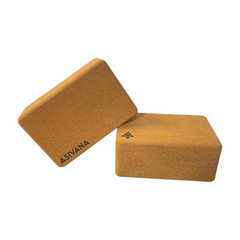Vayu (Air, Wind)
Jack UtermoehlShare
Vayu is a Sanskrit term meaning "air" or "wind" and symbolizes movement, breath, and the animating life-force.
It is one of the five great elements (pancha mahabhutas) in yogic and Ayurvedic philosophy and is closely associated with praṇa—the vital energy that sustains all living beings.
Vayu governs motion in both the body and the cosmos, from the wind in the atmosphere to the flow of breath, thoughts, and emotions within us.
Etymology and Meaning
Sanskrit Spelling: वायु
Root Word: "Va" (to blow or move)
Translation Variations: Air, wind, breath, life-force
Pronunciation: Vāyu [VAH-yoo]
Vayu is more than physical air—it is the subtle intelligence behind all movement, transformation, and communication. It connects the external atmosphere with the internal energy systems of the body.
Vayu in Yogic and Ayurvedic Philosophy
Vayu is essential for life and change:
In Ayurveda: Vayu is the primary component of Vata dosha, responsible for all bodily movement, nerve impulses, and breath.
In Yoga: Vayu governs praṇa and the five inner winds (pancha vayus) that direct the flow of energy in the body.
In Subtle Body Practices: Vayu supports the movement of energy through the nadis and chakras, influencing both vitality and awareness.
The Five Vayus (Winds)
- Prāna Vayu: Inward-moving energy (breath intake, heart center)
- Apāna Vayu: Downward-moving energy (elimination, grounding)
- Samāna Vayu: Centralizing energy (digestion, assimilation)
- Udāna Vayu: Upward-moving energy (speech, growth, spiritual ascent)
- Vyāna Vayu: Circulating energy (movement in limbs, overall flow)
Understanding these inner winds helps deepen the connection between the breath and the energetic body.
Symbolism and Elements
Color: Light green or pale blue, symbolizing openness and flow
Element: Air—dynamic, mobile, invisible yet essential
Mantra: Yam, the bija (seed) sound of the heart chakra, associated with breath and movement
Mudra: Vayu Mudra, a hand gesture used to balance air element and calm nervous energy
Yoga Essentials for Your Practice
Support your yoga journey with high-quality, sustainable props designed for comfort and stability.

Crafted from eco-friendly cork for durability and a comfortable practice.
$24
Shop Now
Includes everything you need to get started: a mat, blocks, and a yoga strap.
$120
Shop NowPractical Application
In Yoga Practice
- Use breath-centric practices like pranayama to regulate and energize the body.
- Explore flowing asana sequences that embody movement and space.
- Pause between movements to observe the stillness between breaths—the subtle Vayu.
In Daily Life
- Be mindful of how your breath reflects your mental and emotional state.
- Spend time in fresh air, allowing your inner energy to align with the environment.
- Balance rest and activity to harmonize Vayu’s qualities of movement and pause.
Quotes and Wisdom
"Breath is the bridge between the body and the mind." — Thich Nhat Hanh
"As the wind moves through space, so prana moves through the body—subtle, powerful, essential."
Modern Relevance
In a world that moves fast and often feels ungrounded, working with Vayu teaches us to regulate our breath, calm the nervous system, and return to clarity.
Through awareness of the breath, we influence our energy, emotions, and capacity to stay present in motion and stillness alike.
Related Concepts
Prana: The life-force energy carried by Vayu throughout the body and mind
Vata: One of the three Ayurvedic doshas, composed of air and ether
Akasha: The element of space, within which Vayu moves
How to Connect with Vayu
Mindset: Be present with change. Honor movement as sacred, breath as life.
Actions: Breathe consciously, move intentionally, speak mindfully.
Reflection: Ask, “Where is my energy flowing—and where is it stuck?”
Suggested Reading
- The Science of Breath by Swami Rama
- The Heart of Yoga by T.K.V. Desikachar
- Prakriti: Your Ayurvedic Constitution by Dr. Robert Svoboda
Conclusion
Vayu, the element of air, is the animating force of life—subtle, mobile, and vital.
Through conscious breath, movement, and energy awareness, we awaken our connection to this essential element and access the quiet power that moves both body and spirit.






